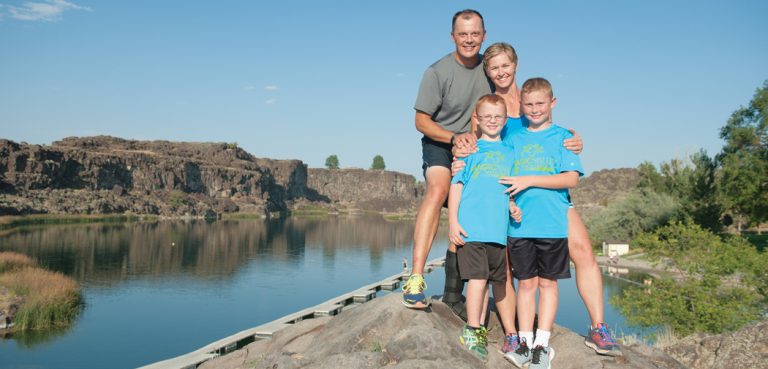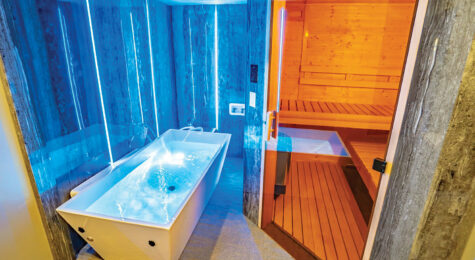Southern Idaho Schools Prepare Students for College and Careers
Schools prepare students for region’s growing economy

As Southern Idaho’s population and economy continue to grow, the region’s education community is keeping pace, building new schools and adding programs that will ensure students receive the training necessary to help the region thrive and prosper. Twin Falls School District, for example, opened two new elementary schools — Pillar Falls and Rock Creek Elementary — in 2016 and a middle school, South Hills, in 2017.
“Education is an integral part of a vibrant community. For us, it’s about ensuring that our kids ultimately can go out and receive advanced training and hopefully come back to the Magic Valley and be able to earn livable wages here in this community,” says Brady Dickinson, Ph.D., superintendent of schools for the Twin Falls School District.
Discover How Southern Idaho’s Quality of Life Gives Residents the Whole Package
Away They Grow
Twin Falls School District is one of several districts serving the Southern Idaho region, just about all of which have undergone renovations or curriculum changes to help better prepare students for college and careers.
Jerome School District encourages work-based learning to prepare high schoolers for careers in the region. The district also recently renovated all of its school facilities to add classroom space.
Minidoka County Joint School District is exploring expanding its agriculture-based curriculum. The high school agriculture science and technology program currently includes courses such as agriculture welding, ag business management and marketing, and veterinary science.
Blaine County School District begins preparing students for the workforce as early as second grade. The district has implemented a project-based learning curriculum in its elementary schools to help connect students to the community and also begin teaching them the soft skills, such as problem solving and teamwork, they will need for future employment.
Cassia County School District, which opened the new John V. Evans Elementary School in 2017, is also home to the Cassia Regional Technical Center. The facility offers high school students lab-intensive, hands-on learning in areas such as automated manufacturing technology, graphic communications and becoming a certified nursing assistant.
“With basically a 2 percent unemployment rate in the valley, it’s really important that we are providing workers for the workforce and ensuring our kids are coming back and becoming contributing members of our economy and our community,” says TFSD’s Dickinson. “We’re really trying to focus in on what kind of skills are needed here in the Magic Valley and also what kinds of careers are available, then making sure that our kids are aware and have an opportunity to explore and ultimately find the careers that are going to be the most beneficial to them.”
Ready for Work
Each of the region’s school districts also offers dual credit courses in partnership with the College of Southern Idaho. High school students may take courses that count toward both a high school diploma and associate’s degree. The cost of the courses are a fraction of the cost for the same course at CSI, so families are able to save in higher education costs.
The College of Southern Idaho serves the region’s workforce development needs through a holistic approach to developing both new and existing workforce pipelines through academic and transfer degree programs, career and technical degree programs and training, dual credit, and workforce training programs. Students also may take courses that apply to bachelor’s degrees from Boise State, Idaho State or the University of Idaho.
“Each of these avenues provides an entry and exit point that serves both high school students and those adults already in the workforce,” says Brandi Turnipseed, executive director of the Workforce Training Center at the College of Southern Idaho.
The center serves business and industry training needs by offering an expansive variety of short-term courses and programming for both career entry and existing careers. In addition, the center works with companies in the startup or expansion phase to provide training services for new employees.
“At the heart of the CSI mission is to provide access to opportunities and support community success through social, economic and workforce-development initiatives. This list of services and community partnerships is long, but what is consistent is that CSI is involved in all aspects of improving our region and the lives of those in our region,” Turnipseed says.
Food for Thought: How Food Production Drives Souther Idaho’s Economy
Private & Parochial Schools
The Southern Idaho region also is home to several private, parochial and charter schools. Area private schools include Lighthouse Christian School, St. Edward’s Catholic School and Twin Falls Christian Academy, all in Twin Falls. The region’s charter schools include Xavier Charter School in Twin Falls and North Valley Academy in Gooding, both K-12; Heritage Academy Charter School in Jerome, which serves K-6 students; and ARTEC Charter School for grades 9-12.



